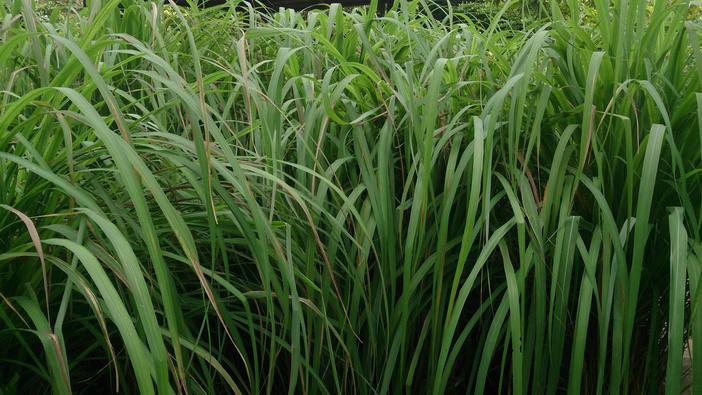Citronella Grass
(Cymbopogon nardus)
Citronella Grass (Cymbopogon nardus)
/
/

Mokkie
CC BY-SA 4.0
Image By:
Mokkie
Recorded By:
Copyright:
CC BY-SA 4.0
Copyright Notice:
Photo by: Mokkie | License Type: CC BY-SA 4.0 | License URL: https://creativecommons.org/licenses/by-sa/4.0 | Uploader: Mokkie | Publisher: Wikipedia Commons













Estimated Native Range
Summary
Cymbopogon nardus, commonly known as Citronella Grass, is a perennial aromatic herb native to the warm temperate and tropical regions of Southeast Asia and Africa. It thrives in open grasslands, cultivated fields, and along forest margins where it forms dense clumps. This species is a member of the grass family, Poaceae, and is characterized by its tall, slender stems and blue-green, linear leaves that emit a distinctive lemony fragrance when crushed. Citronella Grass can grow up to 2 meters in height and spreads through its underground rhizomes.
Citronella Grass is valued for its essential oil, citronella oil, which is extracted from the leaves and used in perfumery, soaps, and as a natural insect repellent. It is not suitable for consumption due to its unpalatable nature. In cultivation, Citronella Grass prefers full sun to partial shade, well-drained soil, and regular watering, although it is drought-tolerant once established. It is often used in ornamental plantings for its attractive foliage and fragrance. However, gardeners should be cautious as it can become invasive outside its native range, outcompeting local flora and affecting pastureland. It is recommended to grow Citronella Grass in containers or controlled areas to prevent unwanted spread.CC BY-SA 4.0
Citronella Grass is valued for its essential oil, citronella oil, which is extracted from the leaves and used in perfumery, soaps, and as a natural insect repellent. It is not suitable for consumption due to its unpalatable nature. In cultivation, Citronella Grass prefers full sun to partial shade, well-drained soil, and regular watering, although it is drought-tolerant once established. It is often used in ornamental plantings for its attractive foliage and fragrance. However, gardeners should be cautious as it can become invasive outside its native range, outcompeting local flora and affecting pastureland. It is recommended to grow Citronella Grass in containers or controlled areas to prevent unwanted spread.CC BY-SA 4.0
Plant Description
- Plant Type: Grass
- Height: 4-6 feet
- Width: 4-6 feet
- Growth Rate: Moderate
- Flower Color: N/A
- Flowering Season: Summer, Fall
- Leaf Retention: Evergreen
Growth Requirements
- Sun: Part Shade, Full Sun
- Water: Medium
- Drainage: Medium
Common Uses
Fragrant, Low Maintenance
Natural Habitat
native to the warm temperate and tropical regions of Southeast Asia and Africa
Other Names
Common Names: 香茅;亞香茅
Scientific Names: , Cymbopogon nardus, Andropogon nardus, Cymbopogon prolixus, Cymbopogon validus, Cymbopogon afronardus, Cymbopogon nardus var. confertiflorus, Cymbopogon confertiflorus, Cymbopogon claessensii, Andropogon confertiflorus
GBIF Accepted Name: Cymbopogon nardus (L.) Rendle